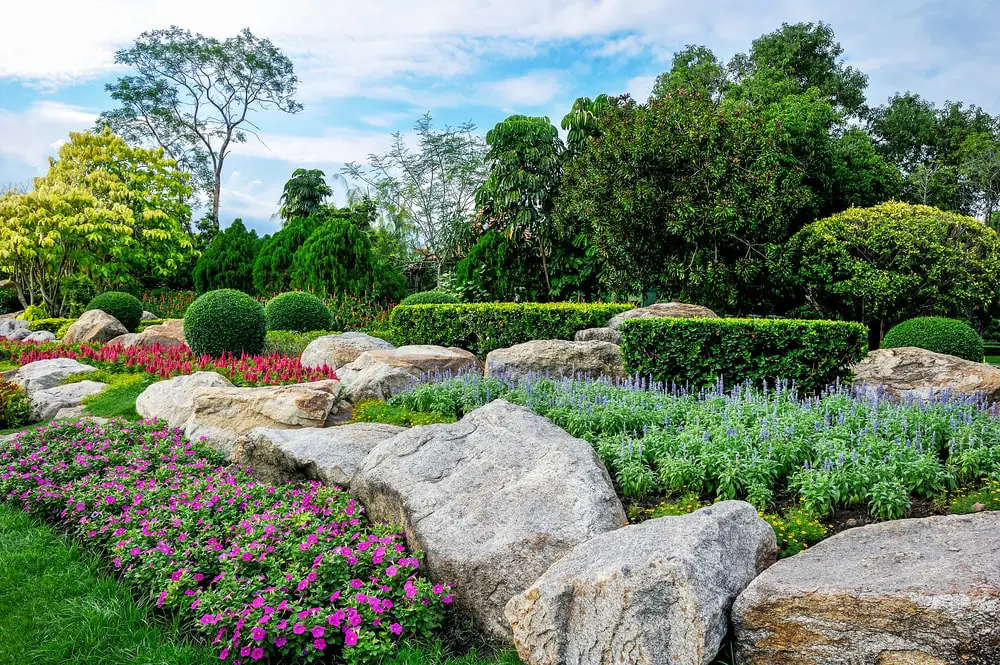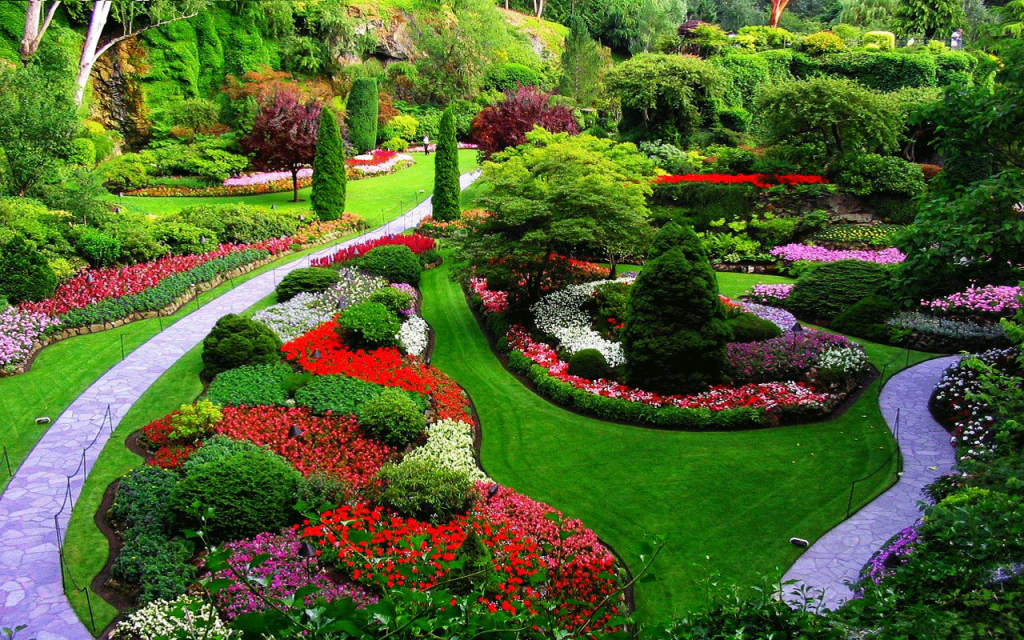Unknown Facts About Hilton Head Landscapes
Unknown Facts About Hilton Head Landscapes
Blog Article
The Main Principles Of Hilton Head Landscapes
Table of ContentsThe Of Hilton Head LandscapesExcitement About Hilton Head LandscapesHilton Head Landscapes Fundamentals ExplainedHilton Head Landscapes Fundamentals ExplainedAll About Hilton Head LandscapesSome Known Details About Hilton Head Landscapes Hilton Head Landscapes Fundamentals ExplainedThe Facts About Hilton Head Landscapes Uncovered
Type compatibility is also a significant part of unity in designone or more strikingly different kinds benefit comparison and focus, yet normally all other kinds ought to have some similarities for a combined look. Structure refers to just how crude or fine the surface of the plant or hardscape material really feels and/or looks.
Examples of plants with coarse structure include philodendrons, agaves, bromeliads, hollies, palms, and hydrangeas. Features that produce fine structure include small foliage; thin, strappy fallen leaves (turfs) or high, slim stems; small, thick branches and small branches; long stems (creeping plants); and little, delicate flowers.
The Basic Principles Of Hilton Head Landscapes
Most plants are medium texture, in that they can not be explained as having either crude or fine texture. They are identified by medium-sized leaves with simple shapes and smooth sides. The average-sized branches are not largely spaced neither widely spaced, and the overall form is typically rounded or mounding. Medium-textured plants work as a background to link and combine the rugged- and fine-textured plants.

To make a room feel smaller sized, place the coarse appearances along the external boundary and the great structures closest to the viewer. The information of the crude texture makes the plants show up closer and makes the area feel smaller sized. The regarded appearance of plants can also change with the distance from the plant.
Hilton Head Landscapes Fundamentals Explained
Vibrant shades raise the contrast and make the texture show up coarser, while muted shades can squash appearance. Hardscape with a rugged texturesuch as very rough rocks and strong, large timberstends to make all plant product show up extra moderate textured. Developers frequently create a texture study (Figure 8) on paper to assist decide the setup of plant products.
Color in plant product and hardscape adds rate of interest and selection to the landscape. Color is the most conspicuous component in the landscape and is usually the emphasis of most property owners; nevertheless, it is also the most short-lived aspect, generally lasting only a couple of weeks a year for private plants.
How Hilton Head Landscapes can Save You Time, Stress, and Money.
A basic description of the shade wheel consists of the three primary shades of red, blue, and yellow; the 3 additional colors (a mix of two primaries) of eco-friendly, orange, and violet; and 6 tertiary colors (a mix of one adjacent main and additional color), such as red-orange. Shade concept describes the connection of shades to every various other and exactly how they ought to be used in a composition.

Comparable (occasionally called harmonious) color pattern are any kind of three to five colors that are nearby on the color wheel, such as red, red-orange, orange, yellow-orange, and yellow, or blue, blue-violet, and violet (landscaping hilton head sc). The shades relate per other due to the fact that they commonly consist of two primaries mixed to create a secondary and two tertiary colors, which suggests they share usual residential or commercial properties
Complementary colors are commonly discovered normally in blossoms; a typical set is yellow and violet. Color is located in the flowers, vegetation, bark, and fruit of plants.
3 Simple Techniques For Hilton Head Landscapes
Environment-friendly foliage in all its numerous shades is the dominant color by quantity, but other colors catch attention a lot more conveniently as a result of their high contrast to the shade green. Shade is likewise found in structures, rocks, pavers, timber, and furniture. Most colors in natural materials, such as stone and timber, are commonly low-key and often tend to be variants of brownish, tan, and light yellow.
Colors have buildings that can influence emotions, index spatial assumption, light top quality, balance, and emphasis. Trendy shades often tend to be soothing and must be made use of in areas for relaxation and calmness.
Fascination About Hilton Head Landscapes
The "temperature level" of colors can likewise affect the assumption of distance. Trendy shades have a tendency to decline and are perceived as being further away, making a room feel larger. Warm shades often tend to advancement and are perceived as being more detailed, making a room feel smaller sized. Shade can also be utilized to catch interest and direct views.
Intense yellow, which has the highest intensity, also has a high contrast with all various other shades (usually described as a "pop" of color) and need to be made use of moderately. A percentage of extreme color has as much visual weight as a large amount of a much more controlled or weaker color.
Analogous (sometimes called harmonious) color pattern are any 3 to five shades that are surrounding on the shade wheel, such as red, red-orange, orange, yellow-orange, and yellow, or blue, blue-violet, and violet. The colors belong to every various other because they typically include 2 primaries blended to create an additional and 2 tertiary shades, which means they share typical residential or commercial properties.
Some Known Questions About Hilton Head Landscapes.
They have a tendency to have high comparison between them. One of the most typical sets are violet and yellow, red and environment-friendly, and blue and orange. Corresponding shades are typically discovered normally in flowers; an usual set is yellow and violet. Color is located in the blossoms, foliage, bark, and fruit of plants.
Green foliage in all its various tones is the leading shade by amount, however other colors catch focus quicker due to their high comparison to the color environment-friendly - landscapers in bluffton sc - https://visual.ly/users/stevenagonzales/portfolio. Color is likewise located in structures, rocks, pavers, wood, and furnishings. Many colors in natural products, such as stone and wood, are commonly muted and tend to be variants of brown, tan, and light yellow
5 Simple Techniques For Hilton Head Landscapes
Shades have properties that can impact feelings, spatial assumption, light high quality, equilibrium, and focus. Great shades have a tendency to be relaxing and must be utilized in areas for relaxation and peacefulness.
The "temperature" of colors can likewise affect the perception of distance. Amazing shades often tend to recede and are regarded as being farther away, making an area really feel larger. Cozy colors often tend to breakthrough and are perceived as being closer, making a space really feel smaller. Shade can also be utilized to capture interest and straight views.
Intense yellow, which has the highest strength, also has a high contrast with all various other colors (typically defined as a "pop" of shade) and ought to be made use of moderately. A percentage of extreme color has as much aesthetic weight as a big quantity of a more subdued or weaker shade.
Report this page